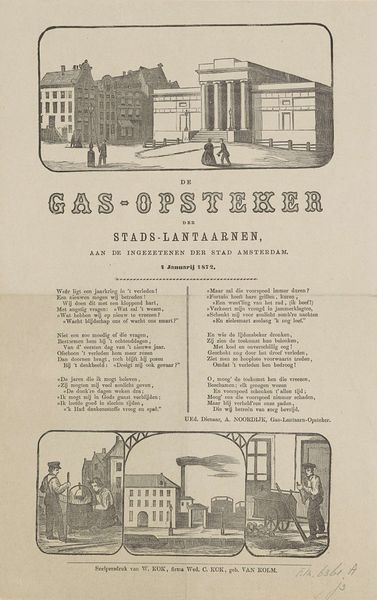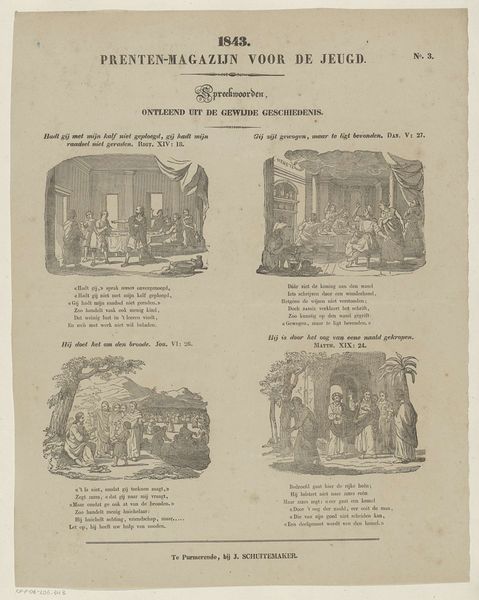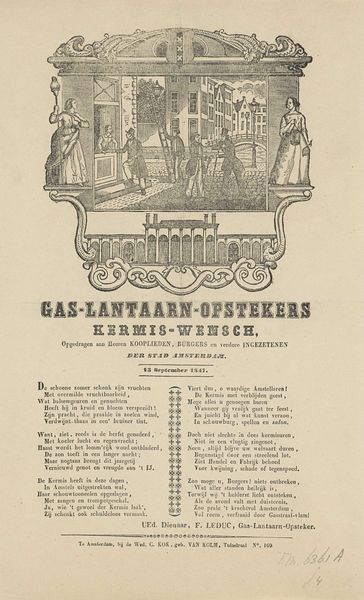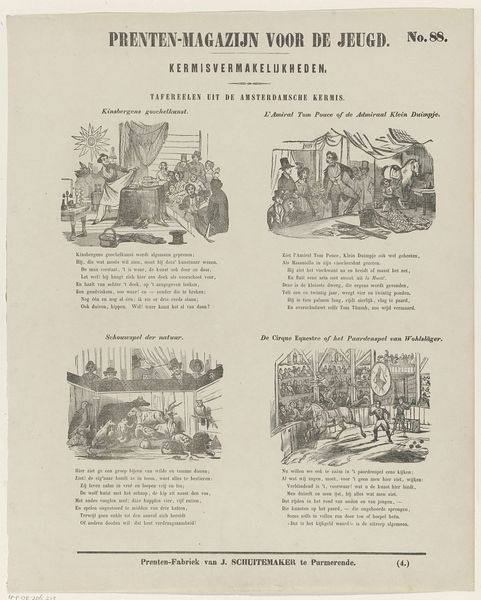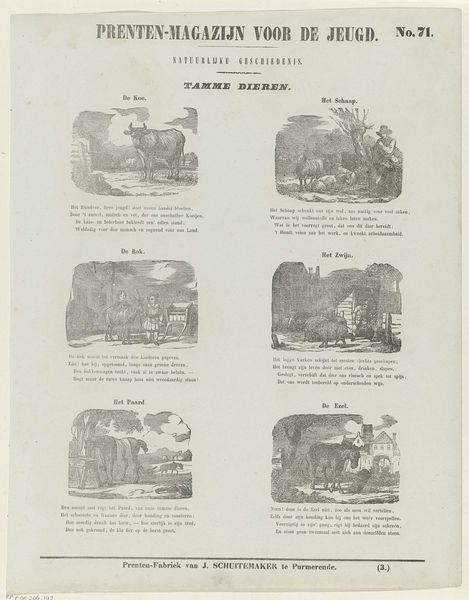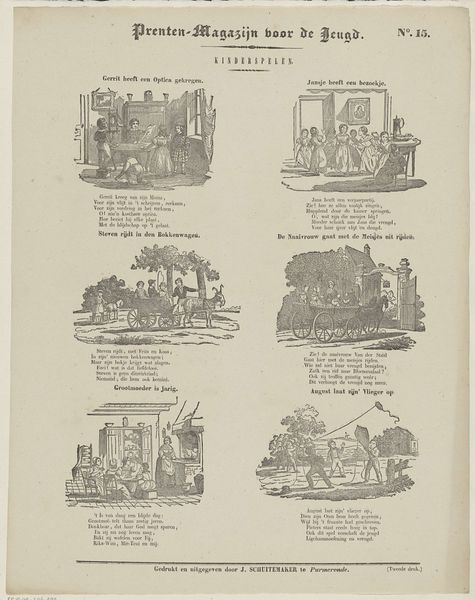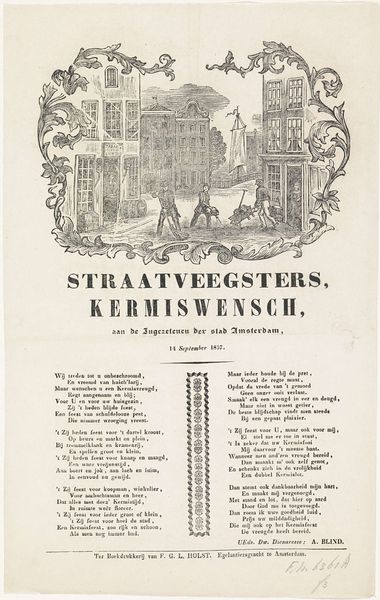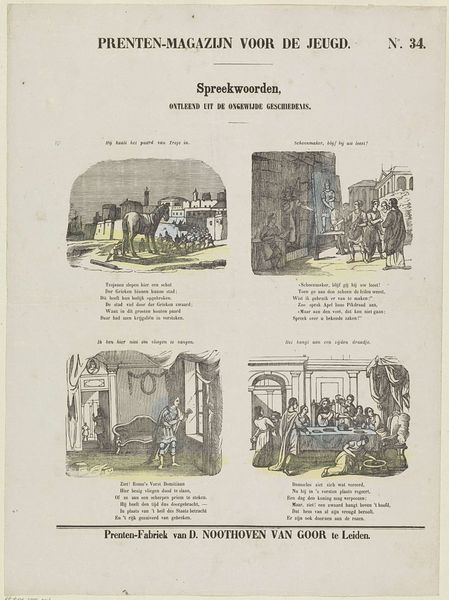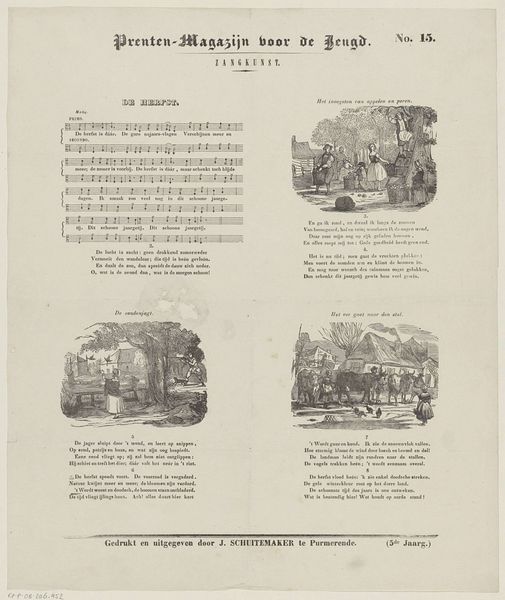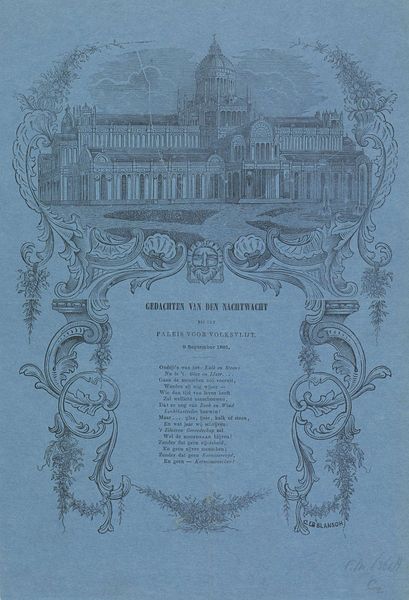
Nieuwjaarswens van de gaslantaarnopstekers van Amsterdam voor het jaar 1854 1853 - 1854
0:00
0:00
print, engraving
#
narrative-art
#
dutch-golden-age
# print
#
old engraving style
#
cityscape
#
engraving
#
calligraphy
Dimensions: height 339 mm, width 210 mm
Copyright: Rijks Museum: Open Domain
Editor: This print, entitled "Nieuwjaarswens van de gaslantaarnopstekers van Amsterdam voor het jaar 1854," roughly translates to "New Year's Greetings from the Amsterdam Lamplighters for the Year 1854." It dates back to around 1853-1854 and it seems to have originated from Amsterdam. The print, or engraving, feels almost like a historical snapshot, depicting city life, but it also carries this sentimentality of well wishes and public service. How do you interpret this work within its historical context? Curator: It's fascinating how this seemingly simple print encapsulates the societal dynamics of mid-19th-century Amsterdam. The lamplighters, crucial to public safety and the rhythm of urban life, are using this medium to communicate directly with the citizens. Think about it—what does it mean for the working class to participate in this form of public address? Editor: I guess it highlights a sense of community responsibility and perhaps even a bid for recognition or respect. They're not just anonymously performing their duties; they are actively wishing prosperity and safety to the city. Curator: Exactly. And let’s consider the form. A print meant for public consumption meant it was accessible. These workers aren't merely lighting lamps; they are attempting to engage in shaping civic identity and articulating a vision for the future. This is not top-down pronouncements but a collective of people doing the hard work. Where do we see echoes of this today? Editor: Hmm, I suppose we see similar expressions through things like public art, community initiatives, and even social media campaigns where ordinary citizens voice their hopes and concerns. It’s a bottom-up dialogue that can affect societal change. Curator: Precisely. The wishes for prosperity, safety, and unity during a time when the role of the 'gas-opsteker' would undergo drastic technological change, connects to today’s concerns and underscores the ongoing dialogue of how labor, class, and the very technologies we use shape the public sphere and collective identity. It provides valuable cultural understanding for how people are connected with each other. Editor: That’s a really interesting way to frame it! I never thought about this as being linked to public engagement. Thanks, that gave me a totally new perspective.
Comments
No comments
Be the first to comment and join the conversation on the ultimate creative platform.
